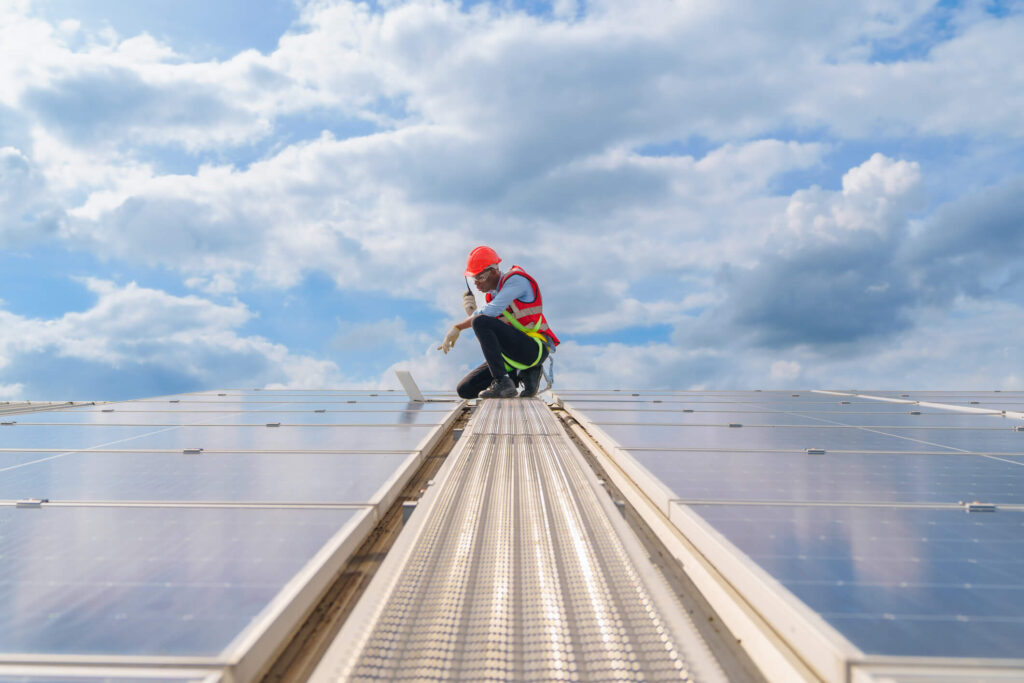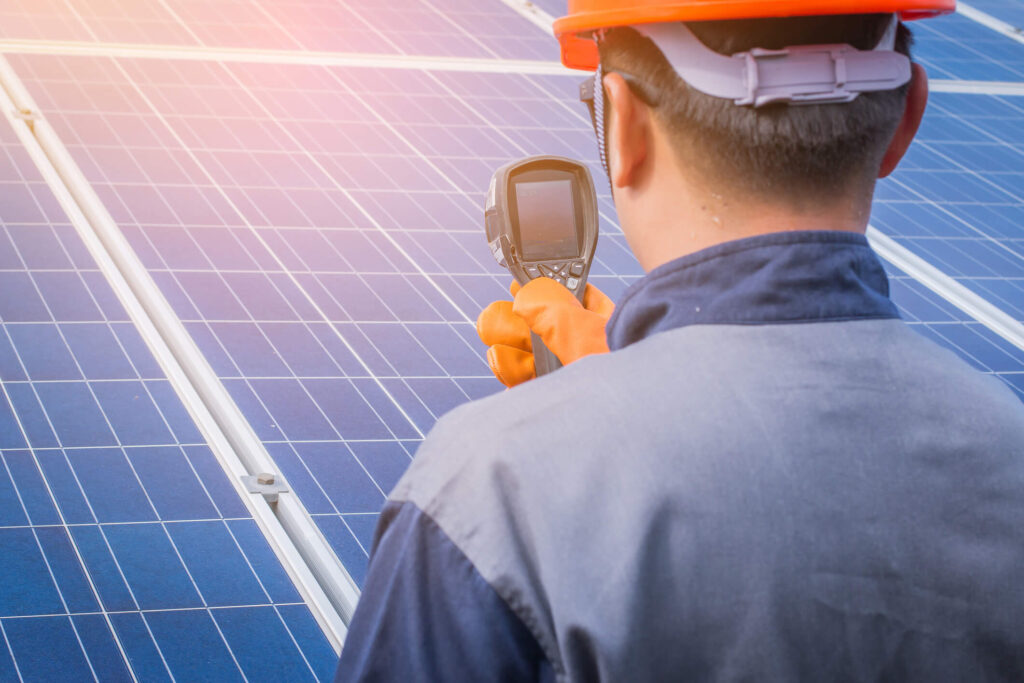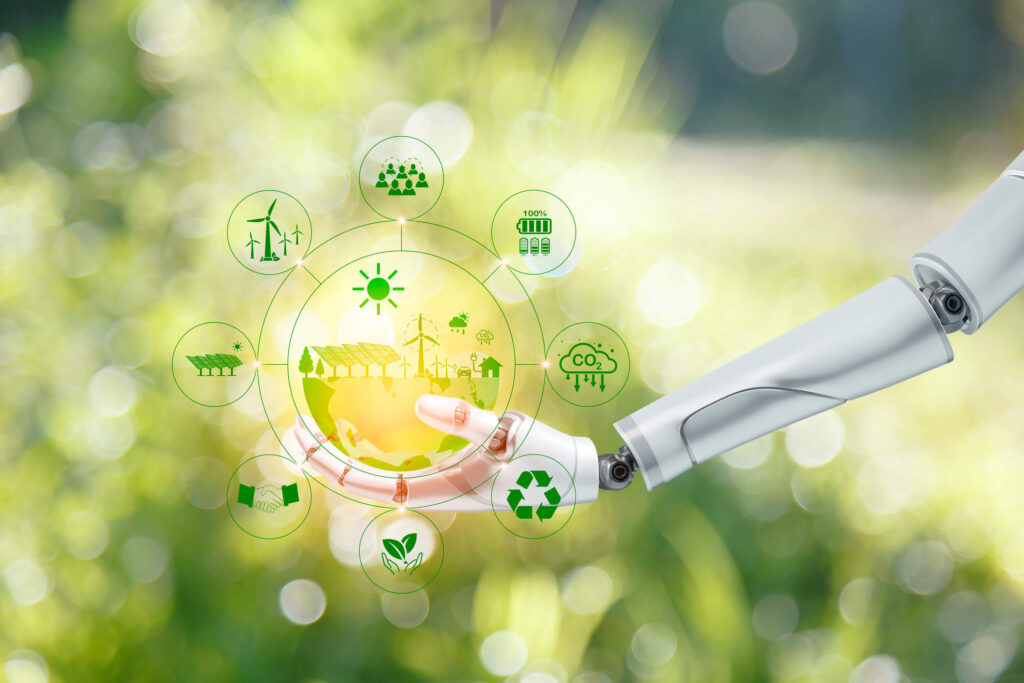The need for the world to move towards sustainable energy sources is propelling the renewable energy industry’s rise. Maintaining the operational efficiency and reliability of wind, solar, and other renewable systems become critical as they multiply. In this case, predictive maintenance (PdM) is showing promise as a revolutionary strategy for maintaining renewable energy systems because it uses cutting-edge technologies to anticipate and prevent equipment breakdowns before they happen.
This article delves into the role, importance, benefits, and challenges of implementing predictive maintenance in renewable energy installations. It also focuses on solutions on how predictive maintenance technologies, like vibration analysis, thermal imaging, and AI-driven diagnostics, are used to optimise the performance and lifespan of wind turbines, solar panels, and other renewable energy assets.
Table of Contents
- The Importance of Predictive Maintenance in Renewable Energy Installations
- Benefits of Predictive Maintenance in Renewable Energy
- Challenges in Implementing Predictive Maintenance
- How to Optimise Renewable Energy Assets with Predictive Maintenance Technologies
- Real-world Examples of AI-Driven Predictive Maintenance
- Conclusion
The Importance of Predictive Maintenance in Renewable Energy Installations
The size of the predictive maintenance market in the energy sector is projected to be USD 1.79 billion in 2024 and expand at a compound annual growth rate (CAGR) of 25.77% to reach USD 5.62 billion by 2029. PdM has been more popular in the industry lately. Therefore, whether you are a maintenance technician, an engineer, electrician or an operations manager, you might be implementing predictive maintenance in renewable energy installations already.
In contrast to traditional maintenance strategies, such as reactive maintenance (fixing equipment post-failure) and preventive maintenance (scheduled servicing regardless of equipment condition), PdM uses real-time data, advanced analytics, and machine learning to predict when equipment is likely to fail. This allows for maintenance to be performed just in time to prevent failure. It is particularly beneficial for renewable energy installations, where unexpected downtimes can significantly impact energy output and economic returns.
Key Role of Maintenance in Renewable Energy Installations

Ensuring that equipment operates dependably and efficiently for the duration of its lifespan is a crucial function of maintenance in renewable energy projects. In order to maximise energy output and optimise return on investment, maintenance activities are essential for preventing unanticipated breakdowns and minimising downtime.
Maintenance specialists assist in early problem identification and mitigation by carrying out routine inspections, preventive maintenance, and quickly attending to any concerns that emerge. They do so by monitoring the equipment’s health and performance. For example, using sophisticated sensors and data analytics, PdM continuously checks the functionality and health of the equipment. The early identification of possible problems with parts like inverters, solar panels, and wind turbine blades depends on this real-time monitoring.
Furthermore, maintenance tasks help renewable energy assets last longer, limit the amount of replacements required, and have a smaller negative environmental impact. In general, maintenance is essential to guaranteeing the performance and sustainability of renewable energy projects over the long term.
Benefits of Predictive Maintenance in Renewable Energy
The importance of predictive maintenance can be underscored by several key factors, ranging from operational efficiency to economic and environmental impacts. Here are some of the key advantages of predictive maintenance in renewables:
- Cost Reduction: It is possible to proactively manage maintenance, minimise downtime, and avoid expensive emergency repairs by anticipating possible faults before they arise.
- Increased Reliability: By enabling the early diagnosis of equipment degradation, predictive maintenance makes sure that renewable energy systems continue to function at their best for extended periods of time.
- Optimised Performance: Predictive maintenance maximises energy output and efficiency by allowing modifications to be made proactively by continuously monitoring the state of the equipment.
- Safety Improvement: Early identification of any equipment malfunctions reduces the safety concerns connected to renewable energy sources, safeguarding people and property.
- Extended Asset Lifespan: Renewable energy assets can have a longer lifespan and a higher return on investment with regular monitoring and appropriate maintenance based on predictive analytics.
Challenges in Implementing Predictive Maintenance

Predictive maintenance implementation in renewable energy systems is not without its challenges. First of all, it might be difficult and expensive to acquire and integrate the required sensor technologies and data analytics infrastructure. To handle the enormous amount of data generated and guarantee a seamless connection with the present control systems, a significant amount of expertise and resources are required. Furthermore, it could be challenging to accurately predict breakdowns due to the unpredictable nature of renewable energy sources like solar and wind as well as the complex interactions between different system components.
Moreover, companies might not be open to change, thus experts accustomed to reactive maintenance practices would need to adapt to predictive ones. Utilising cloud-based solutions for data analysis and upholding data security and privacy adds even another level of complexity. Despite these challenges, overcoming them may bring significant benefits in terms of cost savings, reliability, and improved performance in renewable energy operations.
How to Optimise Renewable Energy Assets with Predictive Maintenance Technologies
Since you know the benefits and challenges of implementing predictive maintenance in the renewable energy sector, now it’s time to find ways to optimise your assets. The use of innovative technologies improves performance and extends the life of renewable energy installations. Hence, the following are some of the technologies that can help you maintain your renewable energy installations:
Vibration Analysis: Ensuring Wind Turbine Reliability
Due to their complexity and large number of moving parts, wind turbines are prone to wear and tear. One essential PdM tool for keeping an eye on these components’ health is the vibration analyser.
How Vibration Analysis Works:
- The gearbox, generator, and rotor blades of a wind turbine are among the important parts that have accelerometers and other vibration sensors installed.
- These sensors gather vibration data continually, sending it in real-time to a central monitoring system.
- Vibration patterns are analysed by sophisticated algorithms to find anomalies that point to possible problems such misalignment, imbalance, or bearing wear.
Advantages:
- Early fault detection: Vibration analysis identifies issues before they escalate.
- Minimised Downtime: Timely maintenance can be scheduled during low-wind periods, reducing energy output impact.
- Extended Component Lifespan: Preventive interventions from vibration analysis prolong critical component lifespans, cutting replacement costs.
Thermal Imaging: Enhancing Solar Panel Efficiency
Solar panels are highly efficient but can suffer from issues such as hot spots and defective cells, which reduce their energy output. Thermal imaging is a powerful PdM technique used to monitor the condition of solar panels.

How Thermal Imaging Works:
- Drones or handheld devices equipped with thermal cameras capture thermal images of solar panels.
- The temperature changes across the panel surface are visible in these photos, emphasising hot spots and other irregularities.
- The thermal images are analysed by specialised software to find malfunctioning cells, connectivity faults, and other concerns.
Advantages:
- Quick and Accurate Diagnostics: Quick and accurate diagnostics with thermal cameras.
- Increased Energy Output: Prompt problem resolution maintains peak performance.
- Cost-Effective Maintenance: Continuous energy generation during imaging reduces costs.
AI-Driven Diagnostics: Revolutionising Asset Management
Artificial intelligence (AI) and machine learning are transforming predictive maintenance by providing sophisticated diagnostics and predictive capabilities for a wide range of renewable energy assets.
How AI-Driven Diagnostics Work:
- AI systems integrate data from various sources, including vibration sensors, thermal cameras, weather forecasts, and historical maintenance records.
- These systems use machine learning algorithms to analyse data, identify patterns, and predict potential failures.
- AI-driven platforms continuously monitor the health of renewable energy assets, providing real-time alerts and recommendations for maintenance.
Advantages:
- Enhanced Accuracy: AI detects nuanced patterns for precise predictions, surpassing traditional methods.
- Optimal Maintenance Scheduling: AI forecasts failures, allowing cost-effective maintenance planning and minimal disruptions.
- Informed Decision Making: AI insights guide operators in optimising performance and extending equipment lifespan.
Real-world Examples of AI-Driven Predictive Maintenance

“Predictive maintenance, enabled by AI, has revolutionised the renewable energy landscape by predicting and preventing equipment failures before they occur. Utilising machine learning algorithms, AI analyses vast amounts of data from sensors and historical performance to identify patterns indicative of potential faults.”
Artificial intelligence (AI) in renewable energy: A review of predictive maintenance and energy optimization, World Journal of Advanced Research and Reviews
ABB’s Predictive Maintenance Software
Predictive maintenance solutions from ABB, a pioneer in power and automation technologies globally, help companies keep an eye on and maintain vital assets. AI algorithms are used by ABB’s AbilityTM Predictive Maintenance software to evaluate real-time data, spot anomalies, and anticipate breakdowns. ABB assists businesses in lowering maintenance costs, increasing productivity, and decreasing downtime by utilising predictive analytics.
IBM’s Renewables Forecasting Platform
IBM’s Renewables Forecasting platform based on AI technology aids in weather pattern prediction and energy production optimisation for solar and wind farms by using advanced analytics, loT sensors, and best-in-class weather data to produce highly accurate energy production forecasts for wind and solar farms. It maximises the generation of renewable energy, facilitates grid integration, and encourages the usage of sustainable energy.
Siemens’ Generative AI Predictive Maintenance
To transform predictive maintenance into prescriptive maintenance and make it more conversational, Siemens has added generative AI functionality to its Senseye Predictive Maintenance system. With this development, predictive maintenance becomes more natural and conversational. Siemens aims to enhance machine learning skills with generative AI to make predictive maintenance and human-machine interactions faster and more effective.
Conclusion
In the field of renewable energy, predictive maintenance is a revolutionary strategy that offers significant advantages in terms of dependability, effectiveness, and financial savings. Renewable energy operators can optimise the performance of their installations by anticipating and preventing equipment breakdowns through the use of sophisticated technologies like big data, AI, machine learning, and the Internet of Things. Predictive maintenance will become increasingly important as the industry develops in order to guarantee the dependable and sustainable production of renewable energy.











